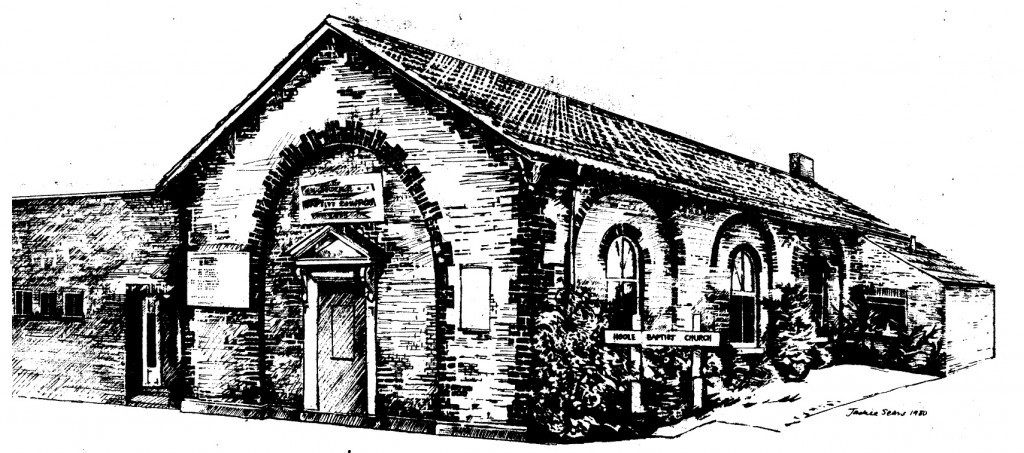Back in the mists of time…
The area we now know as Hoole has its earliest mention in available records in 1119 in the monastery register book of the Abbey of St. Werburgh. Called Hole (meaning “at the Hollows” or “hollow way”), it formed part of the manor of Dunham. The site of the current village centre was known as Bishopsfield.
By the mid-14th Century, it was a waste piece of land used by the Earls of Chester for sheltering their people in time of war. In fact, Hole Heath became known as a sanctuary for fugitive strangers who sought the Earls’ protection during disturbing times. It was first called Hoole in the 32nd year of Henry VIII’s reign (1540).
During the Civil War, the Roundheads besieged Chester for two years and many buildings outside the City Walls were demolished. The siege ended with the Battle of Rowton Moor on 24 September 1646 viewed by the King, Charles I, from Hoole Heath until he was forced to retreat inside the City Wall where he watched his troops’ defeat from the Phoenix Tower.
Great changes in the 19th Century
By 1800, the area was still largely undeveloped although, since about 1760, some wealthy business people had acquired plots fronting or adjacent to St. Anne’s Rake (a Roman Road) and the parallel turnpike road (Hoole Road) close to the City. Travelling along Hoole Road (now the busy A56) was described as “winding along their plantations” and the 1830 and 1840 Tithe Maps show Hoole as an area of hay fields, plantations and groves with the occasional mansion.
The population of Hoole rose slowly and in 1841 still only amounted to 294 people. However, plans were afoot to put Chester on the railway map! Seeing itself as in competition with Liverpool for the Irish trade, the City was keen to connect to Crewe and Birkenhead by rail. The necessary Parliamentary Bill (sponsored by Earl Grosvenor) was obtained and by 1840 the first railway route was operational. Eight years later, the Railway Companies had built the station, goods yard and Hoole Bridge and by 1851, Hoole’s population had increased to 427 people1.
Rural labourers, drawn into the area to either work on the railways or service those who did, required homes. Skilled people were drafted in from all over the country to construct a purpose-built village designed by architects and builders attached to Thomas Brassey’s railway company. As block-by-block of new houses was built, facilities such as shops, churches and schools were added. Nationally, a drive known as “self-education” was being promoted in an attempt to divert working men from taking industrial action over poor working conditions.
Adopting this idea, Chester’s worthies raised funds for a reading room/lecture hall to be built on New Peploe Street (later re-named Westminster Road) for use by local working-men providing the opportunity for them to improve their reading skills (newspapers, circulating magazines/books) and general education (lectures, concerts etc. especially as an alternative to the pub!). Earl Grosvenor MP laid the foundation stone on 7 August 1863 with an engraved silver trowel. Presented to him as a keepsake, this trowel now resides at the Grosvenor Estate’s London office.

With the Hoole population nearing 3,000 in 1881, Ebenezer Baptist Church (then based canal-side in Milton Street) decided to plant a mission in Hoole. So, from 1883, they hired the reading room for Sunday worship3.
Hoole – a mission field
No longer used for its original purpose, the property was put up for sale in 1911. The Mission now being well established, Ebenezer Baptist Church was anxious to buy the property and continue the work; however, they were unable to raise the necessary funds. Another Baptist congregation in the City (Grosvenor Park) stepped in to help and the building known as “The Lecture Hall but at present used as a Baptist Chapel” together with “a stable and cart shed”4 were
purchased and managed jointly. At this date, 5,929 people lived in Hoole5. The first Treasurer was Mr. R. Jones who held the post from 1911 to 1928 and the first Secretary was Mr. J.T. Jones who held the post from 1911 to 1964.
Leaving the nest
In 1948, discussions began with a view to Hoole Baptist Chapel finally leaving the nest of its adopted parent, Grosvenor Park Baptist Church and it was formally established as a separate Church in 1952. At a formal dedication service on 22 November that year, 32 people were welcomed into formal membership as founding members. Hoole Baptist Church was fledged!
During the 1950’s, the Church was well known for its thriving children and young persons’ activities. The Sunday School took part in united Hoole Churches’ walks of witness through the locality and its uniformed organisations flourished.
By 1963, over eighty years had passed since the Mission had been planted in the Lecture Hall. The Church was still functioning from the one room without basic facilities. Thoughts turned to providing necessary facilities and calling a pastor to oversee the work.
Thanks to a substantial gift from Mrs. Earlam of Walker Street in memory of her late husband, a new hall with facilities was officially opened by Mrs. J.T. Jones (widow of the late Church Secretary) on 8 May 1965. A baptistry and pulpit were also added and, on its closure in 1970, George Street Methodist Church donated second-hand pews.

The Pastors so far
From the beginning, the Chapel had largely relied on visiting ministers and lay preachers to conduct services and as Hoole Baptist Church, this had continued; however, in the 1960s the Church began to consider appointing a minister. The Pastor/Ministers to date are:
- 1966 – 1974 Rev. Ralph Gower
- 1974 – 1975 Rev. Goos Vedder
- 1977 – 1990 Rev. Russell Howell
- 1994 – Rev. Andy Glover
Today
This extended building, now known as Hoole Lighthouse Centre, remains the base for much of Hoole Baptist Church’s work including its offices. As you will see elsewhere on this website, the majority of its weekly children’s and youth activities take place here as we continue to work on the foundations of those nineteenth century pioneers who set out to serve God in this community and across the City of Chester.
Notes
- 1851 Census
- 1881 (Kelly’s Directory)
- View stone immediately under roof apex on Westminster Road elevation (this stone was raised to its present position when the Westminster Road window was installed in 1997)
- Conveyance dated 1st September 1911 made between The Personal Representatives of H.F. Richards deceased (1) and The Trustees of the Grosvenor Park Baptist Chapel, Chester (2)
- 5,929 (incs. 531 inmates of Chester Union Workhouse) (Kelly’s Directory)
Acknowledgments
- Cheshire Record Office
- Hoole Millennium Book
- Jackie Sears for 1980 Drawing
